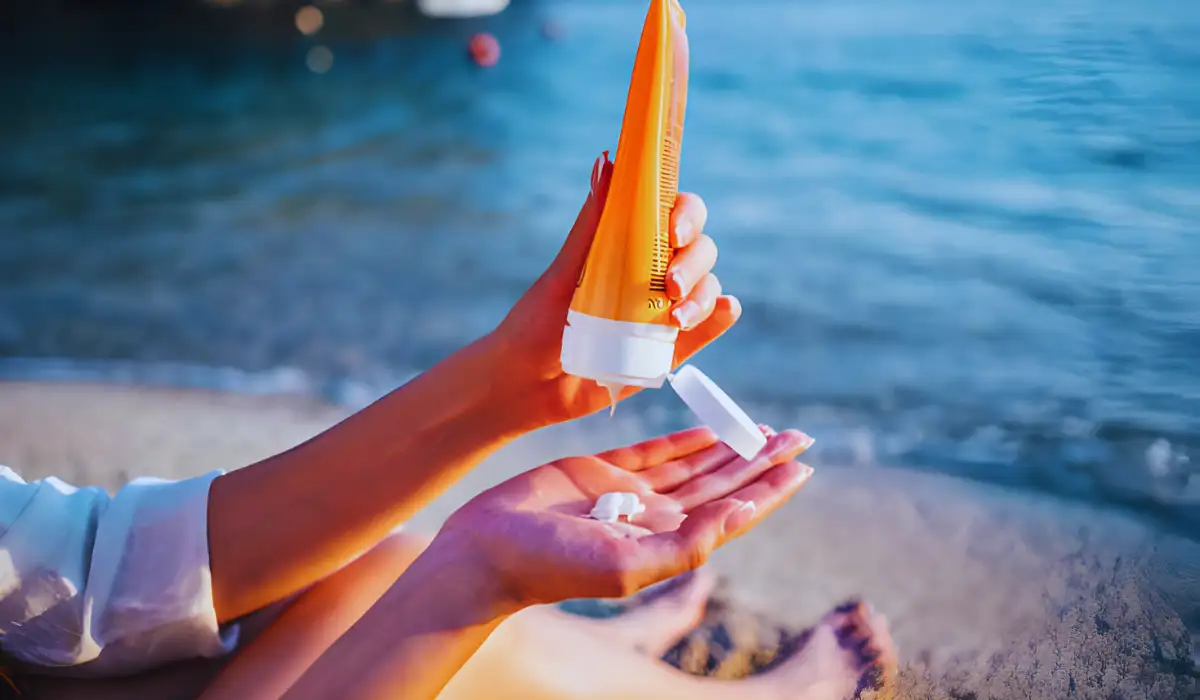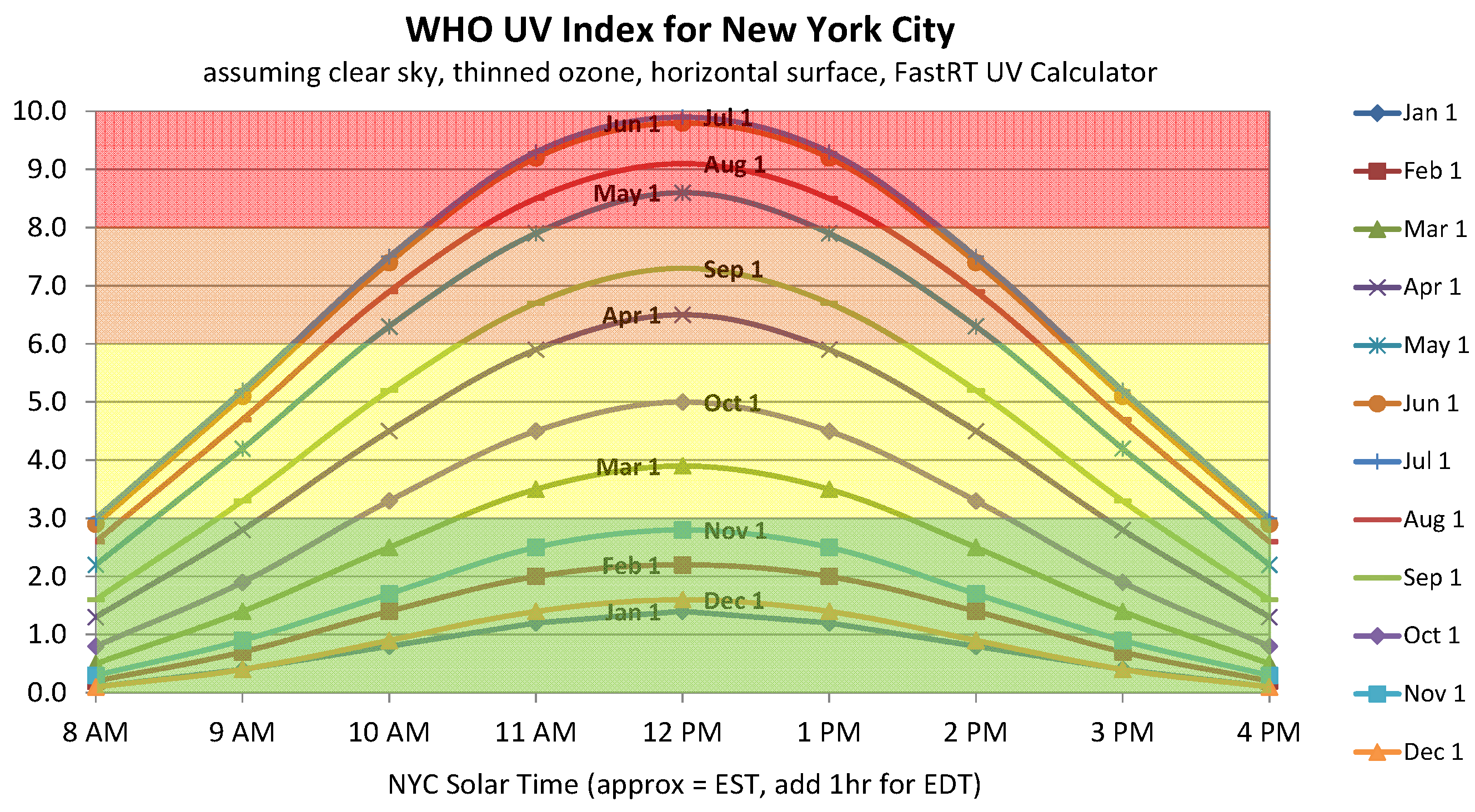Hello loves!
Summer is in full force and that means sunburns are likely in full force, too.
Every day y’all send me questions about how to reduce signs of aging – typically wrinkles and fine lines – and while there are some decent ways to mitigate signs of aging (a good skincare regimen, chemical (not physical!) exfoliation, SHINE for reducing dark spots, retinoids, bee venom) the best way to get rid of wrinkles is to prevent them from occurring in the first place, by protecting your skin every. single. day. with sunscreen.
When Should One Wear Sunscreen?

You hear “Wear it every day!”
And while you probably know from a bad sunburn after skiing or somehow getting burnt on one arm while driving in the winter, for the most part, only sunny days feel like “sunscreen days”.
In fact, every day is a sunscreen day, and today I want to dive into exactly why every day is a sunscreen day.
Because to me, it felt like a kind of voodoo magic–and I don’t like that. I need a why. I know the sun is there, but why are some days particularly bad?
It’s all thanks to our little friend the UV Index.
What’s The UV Index?
The UV Index – or ultraviolet index – is “an international measurement of the strength of sunburn-producing ultraviolet (UV) radiation at a particular time and place” (source).
Fun Fact: The UV Index isn’t all that old. It was only discovered in 1992(!!)
It’s a very simple scale, ranging from 0-11 (and up, I suppose) that lets you know, where you are right now, how much relative UV exposure you would get from the sun if totally uncovered and unprotected (e.g. today’s UV Index in Shenzhen is 8).
In other words, the UV Index lets you know how much damage the sun will do to your skin on a particular day, or in a particular place.
And just in case you forgot how much UV radiation can mess things up for you:
The purpose of the UV Index is to help people effectively protect themselves from UV radiation, which has health benefits in moderation but in excess causes sunburn, skin aging, DNA damage, skin cancer, immunosuppression, and eye damage such as cataracts.
Yuck.
It’s not just about wrinkles, it’s about a whole lot more.
So, even if you just want to drive somewhere, or you’ll only be outside for 10 minutes, it’s probably worth throwing on some sunscreen.
How Can I Find Out The UV Index Score Today?
Thank goodness for Google, because now, it’s actually ridiculously easy to find out the UV Index score where you are on any particular day. You can even search the forecast for the next week (good for vacation planning, no?).

Here’s an example of a UV Index chart for New York City over the course of the hours and months for a year. This is, of course, approximate, but it’s good to abide by.
In the first image, I see temperatures ranging from 78 (lowest low) to 91 (highest high) over the next week, with clouds for the first half of the week. And yet, the UV Index is still 8-9 during the cloudy days and goes up to 11 at the end of the week. That’s INSANE.
According to the EPA, a score of 8-10 (very high) on the UV Index means there’s a very high risk of harm from unprotected sun exposure, while a score of 11 (Extreme) means that skin and eyes can burn in minutes.
I can attest to this from the 2 or 3 times in the past year that I’ve tried to “just go grab some food outside” for a quick 5 minutes and come back to cries of “Lobster! Lobster!” from my boyfriend.
How Fast Will I Burn? Understanding “The Burning Time”
Something else that caught my eye on the Shenzhen UV Index forecast included a little link that said “burning time”.
This obviously can’t be the same for everyone; my boyfriend doesn’t burn for almost an hour unprotected, while I can go for about 5 minutes on a UV Index of 9-10.
That’s totally normal.
Because “burning time” is standardized as MED. MED is the Minimal Erythemal Dose and is defined as the threshold dose that may produce sunburn. In other words, MED is the amount of sun one can get before burning. Each person has a different threshold, even given the same sun exposure with the same UV Index. It’s why you may burn faster than your friends.
If you are very familiar with tanning standards (for tanning beds), you may be familiar with MED and MMD. MMD is the Minimal Melanogenic Dose and is equal to the lowest dose required to develop a visible suntan. MED is measured 24 hours after exposure, whereas MMD is determined 7 days after exposure. You can read more about both measurements here.
While MED is not something that is easy to determine or use in daily life, it is especially important because it is how sunscreen SPF is determined.
According to the FDA:
Sun protection factor (SPF) value. The UV energy required to produce an MED on protected skin divided by the UV energy required to produce an MED on unprotected skin, which may also be defined by the following ratio: SPF value = MED (protected skin (PS))/MED (unprotected skin (US)), where MED (PS) is the minimal erythema dose for protected skin after application of 2 milligrams per square centimeter of the final formulation of the sunscreen product, and MED (US) is the minimal erythema dose for unprotected skin, i.e. , skin to which no sunscreen product has been applied. In effect, the SPF value is the reciprocal of the effective transmission of the product viewed as a UV radiation filter.
(Since you can see that the MED would generally fluctuate across the population, scientists use the category 1-3 skin types (different from above; defined as “always burns easily; never tans” to “burns moderately; tans gradually”) on a scale of 6 types to determine the base MED. Read more about this here).
One would think then:
If {
SPF value = MED (protected skin (PS))/MED (unprotected skin (US))
}
Then {
SPF x MED (unprotected skin (US)) = MED (protected skin (PS))
}
Where MED is an amount of time.
Many people do try to do the math based on the theory to determine sunscreen re-application time – multiply SPF by their base time to burn – but this is difficult to apply in practice, because:
- The UV Index is different on any given day
- The SPF is based on Categories I-III, whereas categories range from III-VI
- It’s not necessarily a linear function
Instead, SPF tells you the amount of sunburn protection from UV radiation that is provided by sunscreens when they are used as directed – not burn protection time. (source)
Additionally, consider that if you are on any of the following medicines, you will burn quicker than you normally do:
- Antibiotics (ciprofloxacin, doxycycline, levofloxacin, ofloxacin, tetracycline, trimethoprim)
- Antifungals (flucytosine, griseofulvin, voriconazole)
- Antihistamines (cetirizine, diphenhydramine, loratadine, promethazine, cyproheptadine)
- Cholesterol-lowering drugs (simvastatin, atorvastatin, lovastatin, pravastatin)
- Diuretics (thiazide diuretics: hydrochlorothiazide, chlorthalidone, chlorothiazide.; other diuretics: furosemide and triamterene)
- Non-steroidal anti-inflammatory drugs (ibuprofen, naproxen, celecoxib, piroxicam, ketoprofen)
- Oral contraceptives and estrogens
- Phenothiazines (tranquilizers, anti-emetics: examples, chlorpromazine, fluphenazine, promethazine, thioridazine, prochloroperazine)
- Psoralens (methoxsalen, trioxsalen)
- Retinoids (acitretin, isotretinoin)
- Sulfonamides (acetazolamide, sulfadiazine, sulfamethizole, sulfamethoxazole, sulfapyridine, sulfasalazine, sulfisoxazole)
- Sulfonylureas for type 2 diabetes (glipizide, glyburide)
- Alpha-hydroxy acids in cosmetics and chemical exfoliators
I think that covers most of my readers, no?
Just stick to re-applying your chemical and physical sunscreens at least every 2 hours (no matter what) or after every time you get wet (whichever happens sooner).
Takeaways: Deep Dive on UV Index, MED, Burn Time, SPF + Sunscreen
I hope that this deep dive was all you ever dreamed of and more.
There’s simply no reason why you shouldn’t be wearing sunscreen every single day. Apart from great genes, it’s the only thing that will keep you looking younger, and longer.
I seriously regret my days of bed tanning (and I know that many of you do, too!) but it’s never too late to start protecting your skin.
For more information and suggestions on the best sunscreens, check out our previous post “Sunscreen Deep Dive and the Best Sunscreen for those who HATE Sunscreen“.
To reduce the damage (if it’s already done), check out our gentle, organic brightening oil, SHINE, to reduce your dark spots, moisturize and nourish skin with essential fatty acids, and even skin tone.
Thanks for reading!

